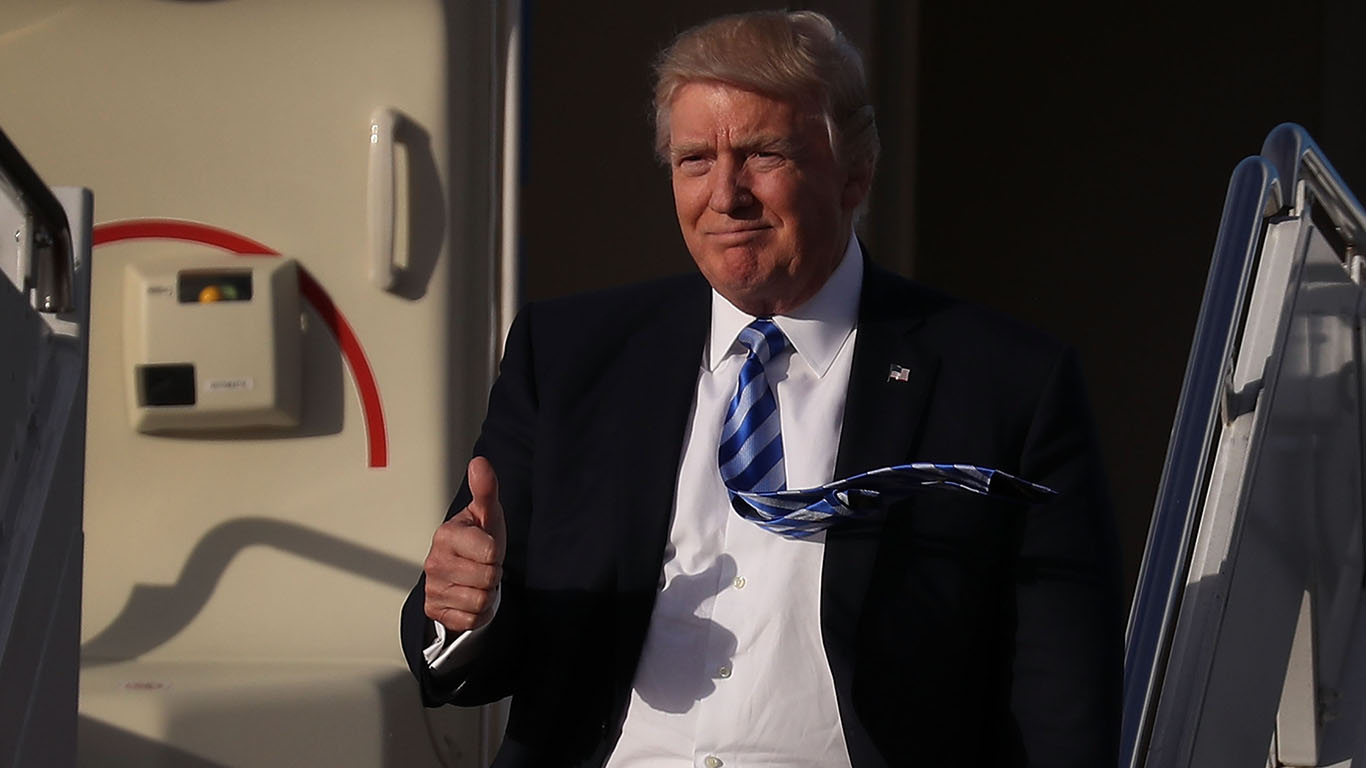
In an interview Thursday, President Trump allowed that he was “not thrilled” about the Federal Reserve’s continuing interest rate hikes. He argued that raising rates strengthens the dollar and that makes U.S. exports more expensive. That is generally true.
Using his bully pulpit to chide the Fed had an unintended consequence, however. Even though Trump said he has no intention of telling the Fed how to do its job, investors took no chances. The U.S. dollar weakened almost as soon as the words were out of Trump’s mouth and equity prices dipped sharply.
Because crude oil trading is conducted in dollars, the currency’s relative strength exerts some influence on the price of oil. A stronger dollar generally weighs on the price of crude while a weaker greenback causes the price of crude to rise. You wouldn’t want to bet the ranch on the relationship between the dollar and crude prices, but it’s worth keeping in mind.
In a Friday morning tweet, Trump took another opportunity to weaken the dollar:
China, the European Union and others have been manipulating their currencies and interest rates lower, while the U.S. is raising rates while the dollars gets stronger and stronger with each passing day – taking away our big competitive edge. As usual, not a level playing field…
— Donald J. Trump (@realDonaldTrump) July 20, 2018
Predictably, the dollar swooned against the euro, and the dollar index (DXY) dropped by 0.6%. It’s not unfair to say that the president’s tweet was a less direct, but an equally well-aimed, shot at the Fed’s interest rate hikes.
Back to crude oil prices. The president wants lower U.S. gasoline prices to arrive in time to boost Republican fortunes in the November elections. One way to push that process along is with a weaker dollar. But will that do the job?
Reuters oil industry analyst John Kemp noted this morning:
The last period of very high oil prices between 2011 and the first half of 2014 coincided with a period of dollar weakness, which cushioned the impact in many major oil-consuming countries.
But oil’s recent rise has been accompanied by a strengthening dollar, especially in recent months, which will intensify the impact on consumers. …
Consumers in many of the fastest-growing fuel markets are being exposed to the impact of pricier oil much more than before. …
If the U.S. dollar continues to strengthen, rising oil prices are likely to prompt a much larger demand-response from consumers than in 2011-2014.
In the current oil-price cycle, demand restraint is likely to be felt much faster and more aggressively than in 2006-2008 or 2011-2014, so long as the dollar remains strong.
The oil market in 2018 is much different from the market in the two major price run-ups Kemp mentions. That difference is nearly 2 million barrels a day of U.S. crude exports and 11 million barrels a day of U.S. crude oil production. If the dollar remains strong, as Kemp suggests is possible, demand for U.S. crude exports ought to decline.
Other things equal, a weaker dollar should make U.S. exports cheaper. But a weak dollar generally lifts crude oil prices. Can it do both at the same time and, if so, what will that mean for gasoline pump prices in the United States and for the U.S. economy in general? November’s election results may depend on Trump getting this right.
Take Charge of Your Retirement In Just A Few Minutes (Sponsor)
Retirement planning doesn’t have to feel overwhelming. The key is finding expert guidance—and SmartAsset’s made it easier than ever for you to connect with a vetted financial advisor.
Here’s how it works:
- Answer a Few Simple Questions. Tell us a bit about your goals and preferences—it only takes a few minutes!
- Get Matched with Vetted Advisors Our smart tool matches you with up to three pre-screened, vetted advisors who serve your area and are held to a fiduciary standard to act in your best interests. Click here to begin
- Choose Your Fit Review their profiles, schedule an introductory call (or meet in person), and select the advisor who feel is right for you.
Why wait? Start building the retirement you’ve always dreamed of. Click here to get started today!
Thank you for reading! Have some feedback for us?
Contact the 24/7 Wall St. editorial team.




